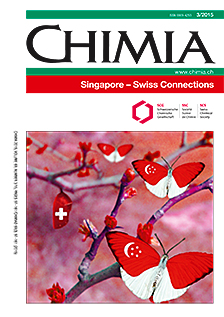Skin Concentrations of Topically Applied Substances in Reconstructed Human Epidermis (RHE) Compared with Human Skin Using in vivo Confocal Raman Microscopy
FH - HES
DOI:
https://doi.org/10.2533/chimia.2015.147Keywords:
Concentration profiles, In vivo, Raman spectroscopy, Reconstructed human epidermis, Skin penetrationAbstract
Detailed knowledge about the skin concentration of topically applied substances is important to understand their local pharmacological activity. In particular since in vitro models of reconstructed human epidermis are increasingly used as models for diseased skin. In general, diffusion cell experiments are performed to determine the diffusion flux of test substances through either skin models or excised skin both from humans and animals. Local concentrations of the test substances within the skin are then calculated applying diffusion laws and suitable boundary conditions. In this study we used a direct approach to reveal the local concentrations of test substances within skin using confocal Raman microscopy. This non-invasive method can also be applied in vivo and therefore we directly compared in vivo concentrations with those obtained from commercially available reconstructed human epidermis (RHE). Hydrophilic and lipophilic test substances with log Pow from –0.07 to 5.91 were topically applied on human skin in vivo and RHE from SkinEthic was used as the commercial skin model. Local concentration profiles in the stratum corneum (SC) showed substantial differences between the RHE model and the in vivo situation. Differences between RHE models and human skin in vivo were also observed in their molecular composition, in particular in terms of their water profile, lipid content and the presence of natural moisturizing factor (NMF). Confocal Raman is shown to be a powerful non-invasive method for qualitative and quantitative comparative studies between RHE models and human skin in vivo. This method can also be applied to validate RHE models for future use in clinical studies.Downloads
Published
2015-03-25
How to Cite
[1]
F. D. Fleischli, F. Morf, C. Adlhart, Chimia 2015, 69, 147, DOI: 10.2533/chimia.2015.147.
Issue
Section
Columns, Conference Reports
Categories
License
Copyright (c) 2015 Swiss Chemical Society

This work is licensed under a Creative Commons Attribution-NonCommercial 4.0 International License.







